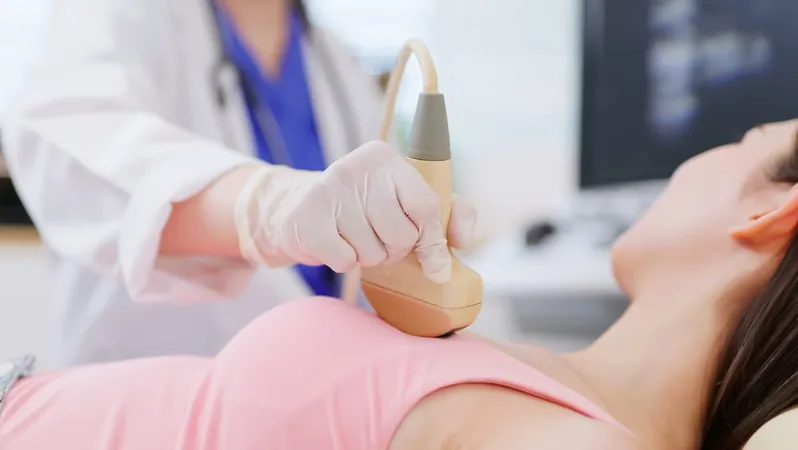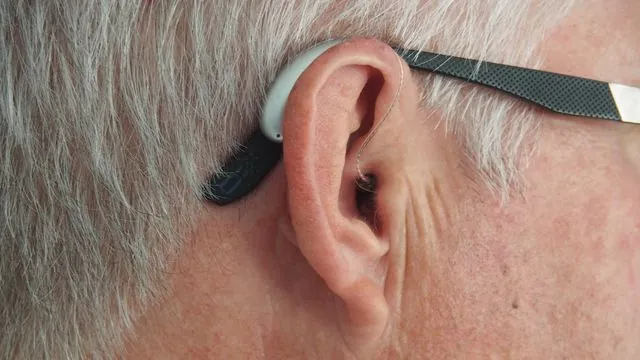
The Hidden Truth About Breast Cancer Risk Assessment Tools: What You Need to Know for Early Detection!
2024-10-27
Author: Siti
Earlier this year, American actress Olivia Munn shocked her fans when she revealed her breast cancer diagnosis and subsequent double mastectomy. The critical factor that led to the timely intervention? A breast cancer risk calculator that indicated she was in the high-risk category.
At 44, Munn’s obstetrician-gynecologist utilized a breast cancer risk assessment score which prompted her to undergo an MRI, breast ultrasound, and, ultimately, a biopsy. The results displayed she had Luminal B cancer in both breasts. Munn has since passionately urged women everywhere to ask their healthcare providers to assess their breast cancer risk, as it could be a lifesaving move.
Understanding Breast Cancer Risk Assessment Calculators
Breast cancer risk assessment calculators are vital tools used by healthcare professionals to estimate the likelihood of a woman developing breast cancer over time. Among the two most prominent options in the United States are the Breast Cancer Risk Assessment Tool (Gail model) and the Tyrer-Cuzick Risk Assessment Calculator (IBIS model).
These calculators are free and operate online, asking questions about factors such as age, race, ethnicity, family breast cancer history, age of first menstrual period, and age during the births of any children.
Although men can also develop breast cancer, the calculators are exclusively designed for women, and their accuracy is primarily validated for certain racial groups in the U.S., specifically white American, black American, Hispanic, Asian, and Pacific Islander populations.
The calculators evaluate a woman’s answers against the averages for her demographic group, estimating both five-year and lifetime risks for developing breast cancer.
Challenges of Risk Assessment in Singapore
When it comes to applicability in Singapore, many experts believe these calculators fall short. Dr. Andrew Clayton Lee, a general and oncoplastic breast surgeon at Gleneagles Hospital, highlights that the data these tools are based on predominantly reflects North American populations. Since Singaporean women hail mainly from Southeast Asian backgrounds, the results could lead to inaccuracies.
“There’s a significant risk that women in Singapore could receive misleading results, potentially leading to false security or undue alarm,” Dr. Lee stated.
Moreover, health professionals emphasize the importance of professional interpretation of these results. Dr. Choo Bok Ai, a senior radiation oncologist at the Icon Cancer Centre, warned that many women utilize these tools without proper guidance, risking misinterpretation which could delay appropriate medical care.
Educational campaigns surrounding breast health are severely needed; the 2022 National Population Health Survey indicated that only about 40% of Singaporean women aged 50 to 69 regularly undergo mammograms—a figure that has now dropped below 35% in 2023!
Cultural taboos, fear of diagnoses, and financial constraints contribute to this hesitance, making it imminent that education and outreach programs focus on encouraging discussions around breast health to increase awareness and prompt proactive health initiatives.
The Limitations of Current Detection Methods
While mammograms remain a staple in breast cancer detection, experts note their limitations, particularly for younger women and those with dense breast tissue. Dr. Lee shows concern regarding the reliability of mammograms, stating they may miss early signs of breast cancer, leading to a false sense of security. This is exemplified in Munn's case: just months before her diagnosis, a mammogram returned no abnormalities.
Moreover, accuracy in ultrasound diagnostics depends heavily on the technician's skills. Critical signs of breast cancer can sometimes be overlooked. Self-examinations also depend on a woman's familiarity with her own breast tissue, underscoring the need for education on what to look for during these exams.
Fortunately, while models like the Gail and IBIS may not be infallible in Singapore, there are promising alternatives—such as genetic testing, which involves analyzing blood or saliva samples for genetic markers indicating heightened risk factors.
Dr. Choo encourages women with close relatives who have had breast cancer to consider genetic assessments seriously, as family history is often a significant risk factor. Yet, while some aspects are uncontrollable, a whopping 80% of cancer risk can be mitigated through lifestyle choices.
Experts recommend adopting a balanced diet, regular exercise, effective stress management, and reducing alcohol intake as powerful means to lower cancer risk.
In conclusion, while breast cancer risk calculators can provide initial insight, they are far from the complete picture. Education, preventative measures, and proactive medical engagement will ultimately hold the key to early detection and successful outcomes in the fight against breast cancer. **Don’t just rely on calculators—take control of your breast health today!**



 Brasil (PT)
Brasil (PT)
 Canada (EN)
Canada (EN)
 Chile (ES)
Chile (ES)
 España (ES)
España (ES)
 France (FR)
France (FR)
 Hong Kong (EN)
Hong Kong (EN)
 Italia (IT)
Italia (IT)
 日本 (JA)
日本 (JA)
 Magyarország (HU)
Magyarország (HU)
 Norge (NO)
Norge (NO)
 Polska (PL)
Polska (PL)
 Schweiz (DE)
Schweiz (DE)
 Singapore (EN)
Singapore (EN)
 Sverige (SV)
Sverige (SV)
 Suomi (FI)
Suomi (FI)
 Türkiye (TR)
Türkiye (TR)